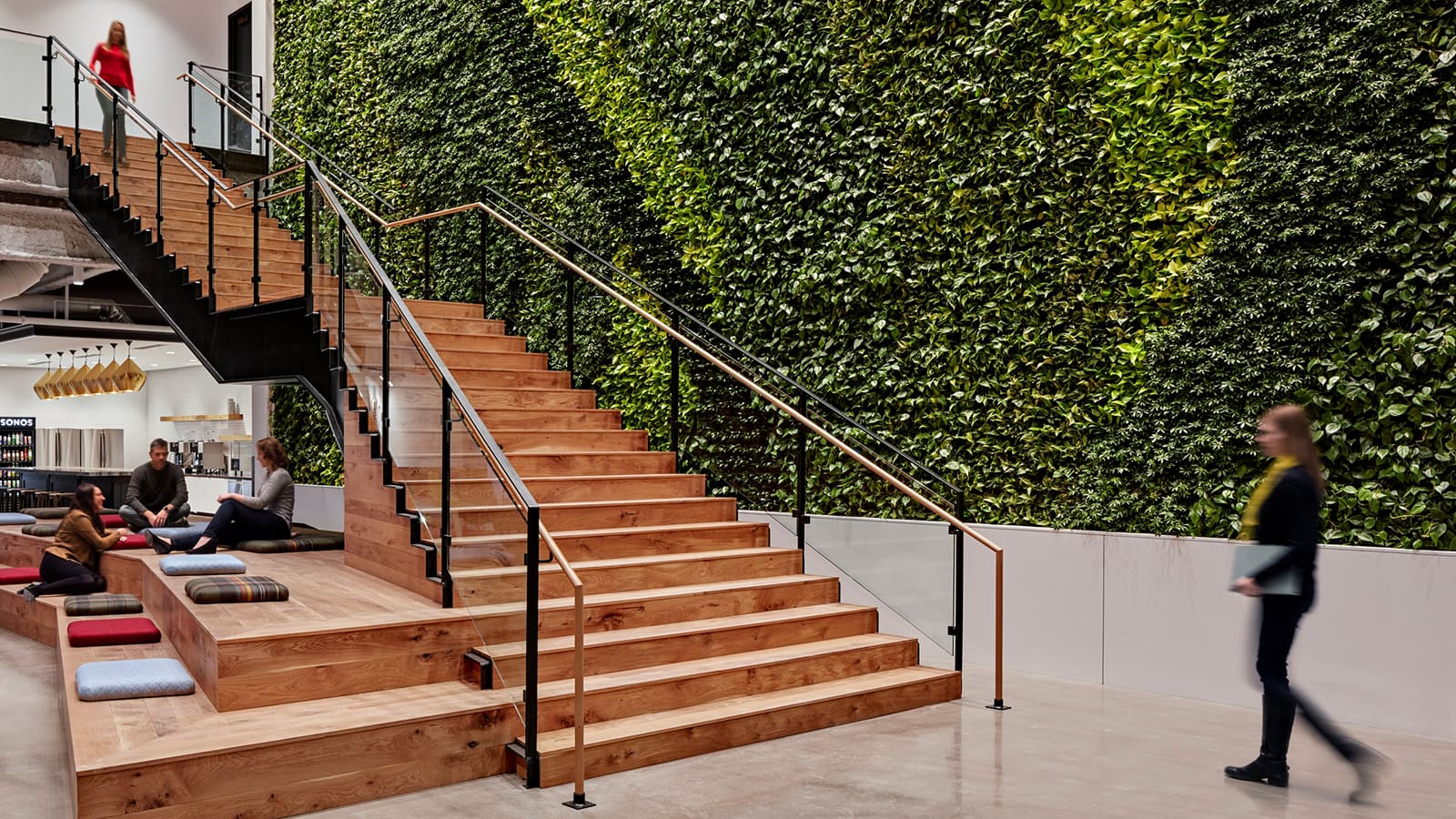Designing for wellness seems the right and proper evolution of workplace design—it aligns with our best instincts as architects to create beautiful environments to help people thrive. But just as we observed green-washing as a result of the popularity of sustainable building standards, there is already a tendency on the part of some in the design industry to slap the word “wellness” on their wares, regardless of whether or not they truly promote wellbeing.
Despite our best intentions, our carefully designed lighting plan may be feeding our eyes the wrong intensity and hue of light throughout the day, disrupting our circadian rhythms. The HVAC system we depend on to keep us toasty on a chilly day, if not properly filtered, may be exposing us to more dust mites, molds and mildews than if we were in a naturally ventilated space. That “quiet room” that ended up being placed next to the bathrooms just doesn’t appeal to anyone, given that you can hear each and every time the toilet is flushed.

